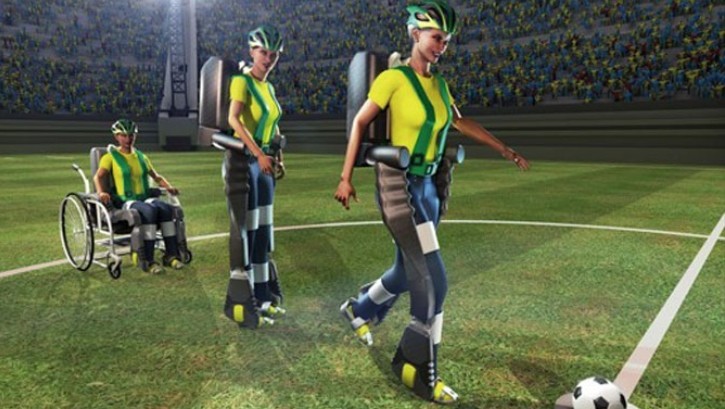While millions of people are waiting for today’s huge opening of the 2014 World Cup, last minute preparations are being made for the ceremony to be perfect. One of the key elements is the traditional first kick. As against to other years, this time a person who's identity is not known will leave behind his or her wheelchair to stand, walk and kick the tournament’s ball.
The entire world is getting ready for the soccer event of the year that is to unite the national teams of 31 countries to play a total of 64 matches during one month of intensive soccer games. 2014 FIFA World Cup is the 20th edition of the tournament and it’s the second time that Brazil is hosting the competition, the previous being in 1950.
We are talking about a total of 64 matches that will be played in twelve cities across the country in either new or redeveloped stadiums. And of course it will have its own crazy opening ceremony that will feature all the pageantry to be expected in this kind of occasion: dancers and pop starts and lights and choreography.
However, as opposed to other editions this World Cup’s official start will bring an unique moment of marvel of scientific innovation, before Brazil will meet Croatia for the first match. The symbolic first kick will be made by a paraplegic wearing an Iron Man-like robotic bodysuit controlled by signals from the brain.
It’s a ground-braking device that is the result of over 30 years of work, more than 200 scientific papers and countless clinical tests. Named the BRA-Santos Dumont, a combination of three letter sporting code for Brazil and Brazilian aviator Alberto Santos-Dumont, it’s a exoskeleton controlled by the brain activity.
Nicolelis started his research back i 1984 when he wrote his doctoral thesis on neural connections in muscular control, and was offered to present its device at the opening of the 2014 World Cup in 2009.
"In 2009, after we learned Brazil was hosting the World Cup, they asked me for ideas to show Brazil in a different way than the world usually sees it. That's when I suggested doing a scientific demonstration to teach people that Brazil is investing and has human potential to do things beyond football," he said. The project was funded with $14 million (EUR 10 million) by the Brazilian government.
We are talking about a total of 64 matches that will be played in twelve cities across the country in either new or redeveloped stadiums. And of course it will have its own crazy opening ceremony that will feature all the pageantry to be expected in this kind of occasion: dancers and pop starts and lights and choreography.
However, as opposed to other editions this World Cup’s official start will bring an unique moment of marvel of scientific innovation, before Brazil will meet Croatia for the first match. The symbolic first kick will be made by a paraplegic wearing an Iron Man-like robotic bodysuit controlled by signals from the brain.
It’s a ground-braking device that is the result of over 30 years of work, more than 200 scientific papers and countless clinical tests. Named the BRA-Santos Dumont, a combination of three letter sporting code for Brazil and Brazilian aviator Alberto Santos-Dumont, it’s a exoskeleton controlled by the brain activity.
The device that enables paralysis victims to walk
According to Discovery, electronic circuits in the device’s “feet” will send a return signal to the user via an artificial skin worn on the arm, conveying the sensation of movement and contact. Brazilian doctor Miguel Nicolelis led a team of 156 scientists from around the world to create the futuristic exoskeleton, which was designed to enable paralysis victims to walk.Nicolelis started his research back i 1984 when he wrote his doctoral thesis on neural connections in muscular control, and was offered to present its device at the opening of the 2014 World Cup in 2009.
"In 2009, after we learned Brazil was hosting the World Cup, they asked me for ideas to show Brazil in a different way than the world usually sees it. That's when I suggested doing a scientific demonstration to teach people that Brazil is investing and has human potential to do things beyond football," he said. The project was funded with $14 million (EUR 10 million) by the Brazilian government.

